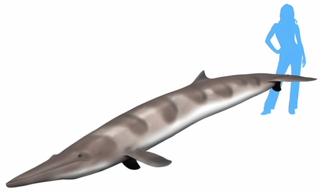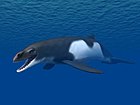
The Anatidae are the biological family of water birds that includes ducks, geese, and swans. The family has a cosmopolitan distribution, occurring on all the world's continents except Antarctica. These birds are adapted for swimming, floating on the water surface, and, in some cases, diving in at least shallow water. The family contains around 174 species in 43 genera.

Glareolidae is a family of birds in the wader suborder Lari. It contains two distinct groups, the pratincoles and the coursers. The atypical Egyptian plover, traditionally placed in this family, is now known to be only distantly related.

The Lacertidae are the family of the wall lizards, true lizards, or sometimes simply lacertas, which are native to Afro-Eurasia. It is a diverse family with at about 360 species in 39 genera. They represent the dominant group of reptiles found in Europe.

Anas is a genus of dabbling ducks. It includes the pintails, most teals, and the mallard and its close relatives. It formerly included additional species but following the publication of a molecular phylogenetic study in 2009 the genus was split into four separate genera. The genus now contains 31 living species. The name Anas is the Latin for "duck".
Joumocetus is a genus of extinct baleen whale in the family Cetotheriidae containing the single species Joumocetus shimizui. The species is known only from a partial skeleton found in Miocene age sediments of Japan.

Cetotheriidae is a family of baleen whales. The family is known to have existed from the Late Oligocene to the Early Pleistocene before going extinct. Although some phylogenetic studies conducted by Fordyce & Marx 2013 recovered the living pygmy right whale as a member of Cetotheriidae, making the pygmy right whale the only living cetotheriid, other authors either dispute this placement or recover Neobalaenidae as a sister group to Cetotheriidae.

Scaldicetus is an extinct genus of highly predatory macroraptorial sperm whale. Although widely used for a number of extinct physeterids with primitive dental morphology consisting of enameled teeth, Scaldicetus as generally recognized appears to be a wastebasket taxon filled with more-or-less unrelated primitive sperm whales.

Herpetocetus is a genus of cetotheriid mysticete in the subfamily Herpetocetinae. Considerably smaller than modern baleen whales, Herpetocetus measured only 3 to 4 meters in length. Additionally, due to the structure of its jaw, it was unable to open its mouth as wide as modern baleen whales, making it incapable of lunge feeding.
Peripolocetus is a genus of balaenid baleen whale from the middle Miocene of Kern County, California.

Cetotheriopsis is a genus of extinct cetaceans of the family Cetotheriopsidae.

Tranatocetus is an extinct genus of mysticete from the late Miocene (Tortonian) of Jutland, Denmark. The type and only species is Tranatocetus argillarius.

Brandtocetus is a genus of cetotheriid mysticete in the subfamily Cetotheriinae. The type and only species is Brandtocetus chongulek from the late Miocene (Tortonian) of the Kerch Peninsula in Crimea.

Mithridatocetus is a genus of cetotheriid mysticete in the subfamily Cetotheriinae. Known specimens have been found in marine deposits in Crimea, Ukraine, and the Russian Caucasus.
Kurdalagonus is a genus of cetotheriid mysticete in the subfamily Cetotheriinae from the Miocene of the Russian Caucasus.
Eucetotherium is a genus of cetotheriid mysticete from Miocene (Tortonian) marine deposits in the Russian Caucasus.
Vampalus is a genus of cetotheriid mysticete from Miocene (Tortonian) marine deposits in the Russian Caucasus. The type species, V. sayasanicus, is based on PIN 5341/1, a complete skeleton. The cetotheriid Eucetotherium helmersonii was mistakenly assigned to Vampalus by Tarasenko and Lopatin, who were unaware that Kellogg (1931) fixed "Cetotherium" helmersonii as the Eucetotherium type species.

Tiucetus is an extinct genus of cetotheriid baleen whale known from the Late Miocene Pisco Formation of Peru.
Zygiocetus is an extinct genus of cetotheriid mysticete in the subfamily Cetotheriinae. The type and only species is Zygiocetus nartorum, known from the Late Miocene (Messinian) of Adygea in the Russian Caucasus.
Beneziphius is an extinct genus of ziphiid cetacean known from late Miocene to Pliocene marine deposits in Belgium and fishing grounds off Spain. The genus name honors Pierre-Joseph van Beneden, who pioneered the study of Neogene marine mammals from Belgium.

Ciuciulea is a genus of cetotheriid mysticete found in middle Miocene marine deposits in Moldova.
















